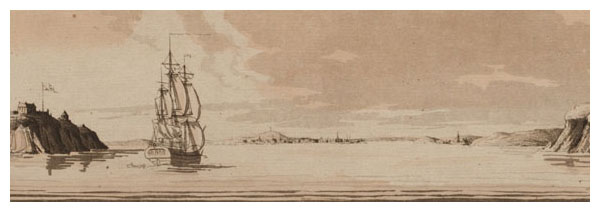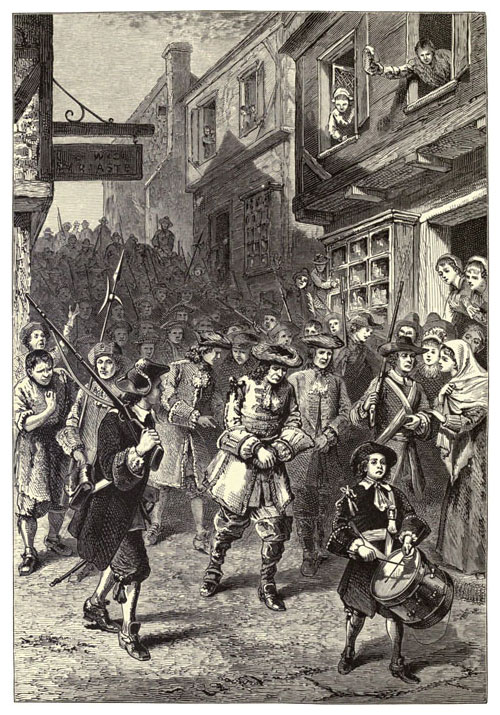
This Article From Issue
September-October 2016
Volume 104, Number 5
Page 310
DOI: 10.1511/2016.122.310
THE FEVER OF 1721: The Epidemic that Revolutionized Medicine and American Politics. Stephen Coss. xiv + 351 pp. Simon and Schuster, 2016. $28.00.
The British writer Ian McEwan, in his novel Enduring Love , writes, “There are always antecedent causes. A beginning is an artifice, and what recommends one over another is how much sense it makes of what follows.” Many, if not most, history books written for popular consumption attempt to identify a particular set of antecedent causes and imbue them with an agency to explain later events—to find, in a way, the pivotal events leading up to the pivotal events. Such is the template of Stephen Coss’s new history, The Fever of 1721: The Epidemic That Revolutionized Medicine and American Politics. He focuses on a two-year period from 1720 to 1722, a moment unheralded in American history by all but a handful of medical historians and those deeply knowledgeable in Boston lore.

In 1721 Boston was wracked by a smallpox epidemic that infected up to half the population and killed one-tenth. It was introduced to the city by Captain Thomas Durrell of the Royal Navy who, in his attempt to conceal the illness rampant among his crew, exercised his military prerogative and docked at nearby Castle Island, a fort in Boston harbor, rather than the more distant island reserved for quarantine. Durrell wanted to avoid any delays in his ability to sail freely. In fact, within two weeks of arriving, Durrell had convinced the royal governor to allow him to sail—with a shorthanded crew—in pursuit of a pirate ship spotted near Cape Cod. Unfortunately, the closer proximity of his mooring during that time allowed sailors to shuttle regularly to Boston, essentially guaranteeing that the disease would spread to the city.
Although the book’s eponymous fever is smallpox—and smallpox does frame the events described in the book—writer and independent scholar Coss maintains that another kind of fever marks 1721 as pivotal in American history. Just as smallpox was beginning to take hold in Boston, James Franklin, elder brother of a more famous Franklin, launched the first independent newspaper in the colonies, The New-England Courant. Its emergence marked the beginning of a nascent nation’s obsession with partisan broadsheets. And thanks to the coincidence of timing, the newspaper’s editorial focus at its launch reflected deep concern with the disease taking hold of the city. Moreover, it provides perhaps the earliest example of an independent press covering a colonial epidemic in ways not officially sanctioned by the government. The tensions between an honest reporting of a disease’s spread and the government’s desire to downplay both the risk and its own culpability in the outbreak are in full view in Coss’s history. Although Boston’s relationship with the Crown had long been tumultuous—a circumstance evident as early as 1689, when Bostonians deposed their royal governor—Coss makes a convincing argument that the introduction of a partisan, independent press in the first half of the 18th century was either a cause or a consequence of an underlying dissatisfaction that led directly to the events of the second half.
James Franklin’s occasional antagonist in the story is the Revered Cotton Mather, the man who, by 1721, was already reviled for his role in the infamous Salem witch trials 28 years earlier. In addition to being a prolific religious writer, Mather was a self-styled scientist. In the pages of a 1716 copy of the Philosophical Transactions of the Royal Society he had read an article by a Greek physician named Emanuel Timoni titled “An Account, or History, of the Procuring the Small Pox by Incision, or Inoculation; as It Has for Some Time Been Practiced at Constantinople.” Mather was enthralled and, several years later, when smallpox returned to Boston, he made it his mission to bring the practice of inoculation to the colonies—in contravention of the opinion of Boston’s learned physicians. To carry out the procedure, he enlisted a physician whose last name remains well-known by Bostonians, so prevalent is its association with the city: Zabdiel Boylston. A general physician who also ran the largest apothecary shop in town, Boylston was known for his groundbreaking, risky, but largely successful surgeries. In 1718, Coss notes, he saved a cancer patient’s life by performing “the first recorded mastectomy in American history.”
After attempting with little success to convince the small community of Boston physicians to attempt inoculation, Boylston informed Mather that “he would gather smallpox matter from an afflicted patient and implant it in the skin of three healthy subjects.” Boylston also decided that one of the first three subjects would be his own son. When this trial met with success, he followed with more rounds of inoculations. Although his aim was to inoculate only healthy patients, some who were suffering from other maladies appealed to him for the treatment, presenting him with a conundrum. As Coss explains, Boylston knew that “refusing their requests meant that they would probably die if they came down with smallpox naturally. Going ahead with the operations significantly increased the likelihood that he would lose a patient and open himself to more dangerous repercussions from the public and the government.” Such repercussions could lead to still more deaths if his inoculation efforts were halted. His patients’ resolve to be treated, however, even when informed of the risks, persuaded him to proceed. From June 1721 through May 1722, he inoculated 248 people; 242 survived.

These efforts were far from being universally welcomed. Boylston was accused, in language not unfamiliar to our own time, of being a “quack,” and Mather was attacked for being zealous about the mysterious procedure of inoculation in the same way he had been overzealous in hunting witches decades prior. Franklin’s Courant provided an outlet for many of these claims by Boston physicians. Although Franklin’s own position on inoculation is difficult to determine, a piece in only the third issue of the newspaper had claimed that “the ‘chief design’ of the Courant was to oppose inoculation.”
By the time the epidemic burned itself out in 1722, Mather and Boylston were largely vindicated. Even the anti-inoculation physicians had grudgingly accepted the procedure’s effectiveness. But it wasn’t until 1776, when George Washington ordered the mass inoculation of the Continental Army, that the procedure was broadly accepted by officials. Boylston went on to write a detailed account of his experiences, marking what one scholar describes as “one of the first times quantitative analysis was applied to a medical problem.” Coss notes that Boylston’s book appeared “75 years before the word ‘statisticks’ first appeared in a medical dictionary.”
One might quibble that Coss makes too much of this particular epidemic, too much of this particular moment in history. The book isn’t quite a medical history: Coss reserves almost all discussion about the state of medical knowledge in 1721 to the epilogue, devoting the main body of the work to the drama occurring in Boston. To Coss, the historical import of the moment lies more in the development of the free press, and its role in shaping the generation that went on to shape the generation of American revolutionaries. Whether the appearance of smallpox spurred future events remains open to debate—regardless, Coss’s account certainly makes for good reading.

American Scientist Comments and Discussion
To discuss our articles or comment on them, please share them and tag American Scientist on social media platforms. Here are links to our profiles on Twitter, Facebook, and LinkedIn.
If we re-share your post, we will moderate comments/discussion following our comments policy.